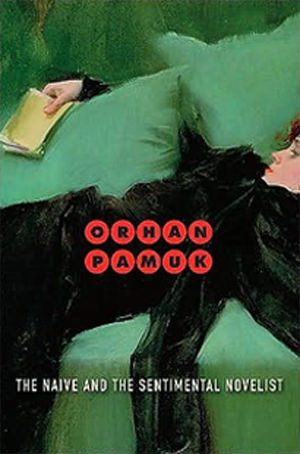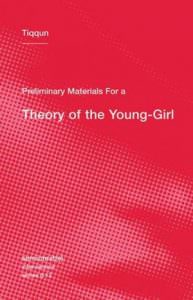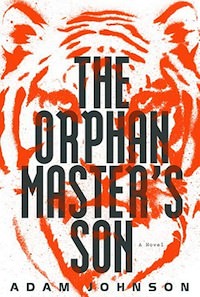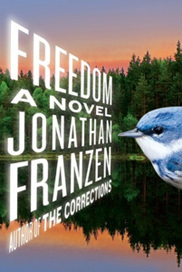|
To see long excerpts from “The Naive and the Sentimental Novelist” at Google Books, click here.
|
“The Naive and the Sentimental Novelist” by Orhan Pamuk is a love letter to the literary novel. It can expand your awareness and joy of reading. For novelists, it’s a treasure trove.
A lot of literary criticism reads like an autopsy report, dissecting the “text.” In examining the novel, this little book is more like exploring what animates the body. It traces the circulatory system of the novel, delves into the sensory fields that make up character, and lingers on the invisible but pervasive miracle that is a novel’s consciousness—its “secret center,” Pamuk puts it.
I get impatient with novel theories or critics who have never seriously attempted the massive, painstaking task of writing one. Pamuk knows what he’s talking about. He has authored eight novels (six translated from Turkish to English). He’s also an essayist, an activist for freedom of expression and the winner of the Nobel Prize in Literature in 2006. In his inspiring Nobel speech he describes what it’s like to write a novel by invoking a Turkish saying: “to dig a well with a needle.”
A difficult job, in other words. But all around the world, published and unpublished novelists are digging away. Pamuk says that wherever the novel form has taken root, it has become the dominant way of storytelling. He doesn’t discuss new technology, but even 140-character limits can’t contain the novelistic urge. Novels now are told via cellphones and Twitter, not merely paper or screen. They can even lack words entirely: witness some graphic novels.
What is this strange urge to sit alone in a room (as it’s mostly done) and write word after word, often struggling for the right one, when everyone else is the beach? But wait: Why are those people at the beach staring for hours on end at a page (or screen), relaxing by intently tracking details in a story that isn’t even true?

The Naive and the Sentimental Novelist
By Orhan Pamuk
Harvard University Press, 208 pages

What do novels do to us? Why do we read them, and how can we read them better? What makes a novel work across cultures, formats and centuries?
The odd title of Pamuk’s book is inspired by German philosopher/playwright Friedrich Schiller’s famous essay “On Naive and Sentimental Poetry.” Pamuk uses Schiller’s ideas as a starting point for discussion about both readers and writers. For readers, “naive” refers to how we forget ourselves in a story; “we feel that the fictional world we encounter and enjoy is more real than the real world itself.” But the modern reader knows the story is only a dream. Thus we’re sentimentalisch, the German term describing a person who has grown from naiveté into awareness and reflection.
For writers, the naive is the Romantic ideal of spontaneous creativity—whether dictated by God, a muse, drugs (Coleridge’s claim of inspiration in writing “Kubla Khan”), alcohol and the rush of the road (Kerouac), or sheer genius. The sentimentalisch writer, on the other hand, “is unsure whether his words will encompass reality” and is “exceedingly aware of the poem he writes, the methods and techniques he uses, and the artifice involved in his endeavor.” This writer is “modern,” Pamuk says. Or postmodern, I would add. Metafiction is its embodiment.
These two ideas become the book’s themes. Pamuk spins a theory of the novel that involves the search for meaning, the interplay of truth and lie, the essential optimism in the act of reading and writing—and the pleasure we take in the experience of all these things. Good readers and writers are both “naive” and “reflective” (as Pamuk renames sentimental) at the same time.
“The Naive and the Sentimental Novelist” is short; you can finish it in one sitting. It’s more enjoyable over time, though. It repeats itself a lot. The six chapters were originally delivered as the 2009 Norton Lectures at Harvard, so they necessarily circle back on themselves. Here I’ll give glimpses into some key ideas, then share my own compendium of the book’s tips for novelists.
Tolstoy’s meaning, Pamuk’s ‘center’
Open the novel, and what happens? We “follow the narrative”—the story—but also, Pamuk says, we “try to figure out the meaning and main idea that are suggested by the things we encounter.” Especially if there’s no strong plotline, why do we keep scrambling among the thousands of details? Pamuk argues that we’re trying to connect the dots to discern the meaning that lies beneath the story’s surface. He likens the reader to “the hunter who treats each leaf and each broken branch as a sign and examines them closely as he progresses through the landscape. We move forward sensing that each new word, object, character, protagonist, conversation, description, and detail, all of the linguistic and stylistic qualities of the novel and the twists of its narrative, imply and point to something other than what is immediately apparent.”
This “something” is what he calls “the center,” a mystical-sounding idea that lies at the heart of his theory of the novel. The center is a particular novel’s “profound opinion or insight about life, a deeply embedded point of mystery, whether real or imagined.” We read, he says, in a state of constantly, even anxiously, seeking “a fragment of knowledge, an intuition, a clue about the deepest thing—in other words, the center, or what Tolstoy would call the meaning of life (or however we refer to it), that difficult-to-reach place we optimistically think exists.”
Does it exist? “The act of reading a novel,” he says, “is the effort to believe that the world actually does have a center, and this takes all the confidence one can muster. The great literary novels—such as Anna Karenina, In Search of Lost Time, The Magic Mountain, and The Waves—are indispensible to us because they create the hope and the vivid illusion that the world has a center and a meaning, and because they give us joy by sustaining this impression as we turn their pages.”
At least this is the case for literary novels. With some exceptions, genre novels don’t inspire this search. They keep people reading through plot elements and suspense. They give us “the peace and security” of familiarity, which does have its value: We aren’t “drained by the constant effort,” as in literary novels, “of asking basic questions about the meaning of life.”

The Naive and the Sentimental Novelist
By Orhan Pamuk
Harvard University Press, 208 pages

A whale is a whale is a … goon
Pamuk’s main example of a “center” is overused (I recall it from high school CliffNotes), but it does illustrate. You know what I’m going to ask: Is “Moby-Dick” really about a whale? At first, “Moby-Dick” seems to be about the tough life of whale hunters; after all, the narrative has gone into great detail about whaling. Then, as the novel delves into Captain Ahab’s madness, the book becomes about the psyche of obsession. Finally (Pamuk quotes Jorge Luis Borges, writing on Melville): “Page by page, the story grows until it takes on the dimensions of the cosmos.”
Interestingly, he says that what makes a novel especially deep and brilliant is a great distance between the surface story and its center. If the center is too obvious, the act of reading is boring. In “Moby-Dick,” the reader can “constantly feel the presence of the center” but for a long time has no idea of what it is. We “constantly ask where it might be, constantly change our mind as to the answer.” The best novels are constructed in both content and form “as an enigma—a puzzle whose solution reveals the novel’s center.”
The goal is for the reader to “have to search for and imagine the center in every sentence and every paragraph, in order to understand what is important and what is not.”
A subtle way that fiction accomplishes this is by “talking about important things as if they were irrelevant, and about unimportant things as if they were relevant.” (Don’t try that at work.)
This description is confusing, but I began to consider it while I was reading Jennifer Egan’s new novel, “A Visit From the Goon Squad,” the latest Pulitzer and National Book Award winner for fiction. “Goon Squad” is a series of stories that are linked often just by one character who appears in an earlier stories. The surface voices (each chapter has a different narrator) are watertight, sometimes glib or seeming to ramble, engaged in the stuff of life and never overtly profound. The stories are set in or around the music business. What this book is really about: time, loss, and the way life goes so fast and is gone.
As I started reading “Goon Squad,” I was wondering what the bizarre title meant. About a third of the way through, and only once, Egan tipped her hand. I’m talking about two lines of dialogue in a 273-page novel. A washed-up guitarist, talking about how now, 20 years later, he’s a mess, says, “Time’s a goon, right? Isn’t that the expression?” Another character repeats it, saying he’s never heard that phrase. That’s it, but it’s a direct clue to the book’s center. To an attentive reader, it leaps out. Rather than losing curiosity, though, I was jolted into a new level of reading the novel. Egan didn’t elaborate at all, so I was more intrigued than before. How was this novel about time? I’m not really interested in the music business, and the characters weren’t particularly likable. But I sure was keen to puzzle out the meaning in these linked stories.
The truth of the lie
This idea of a center, Pamuk says, is what makes a novel different from more linear literary forms such as epics, traditional adventure narratives or romances. He also outlines another thing that makes novels work: the contradiction between believing the novel’s story and yet being aware of the lie. To write or read a novel well, we must be simultaneously naive and sentimental/reflective.
A funny and provocative chapter called “Mr. Pamuk, Did All This Really Happen to You?” describes something every novelist on a book tour experiences: readers believing deep down that the story is autobiographical. It isn’t, of course. And yet novelists do draw on their own lives, and they also try with all their might to make readers lose themselves in the story. Pamuk says of his 2008 novel “A Museum of Innocence,” “I intended my novel to be perceived as a work of fiction, as a product of the imagination—yet I also wanted readers to assume that the main characters and the story were true.”
Because we know the story isn’t real—or so we’re told—we read novels completely differently than memoirs, say, or anything else purporting to be true. As soon as a book is called a novel, we “start looking for a center, wondering about the authenticity of details, asking ourselves which part is real, which part imagined.”
When a novelist lives under a repressive regime, this power of the novel—its union of true and false—takes on yet another twist. The writer can’t speak truth directly, or at least state it as such. But she can tell it under the guise of fiction.
When readers and writers maintain the illusion of the novel while also acknowledging its constructed nature, they receive the special gift of this form: to “escape the logic of the single-centered Cartesian world where body and mind, logic and imagination, are placed in opposition. Novels are unique structures that allow us to keep contradictory thoughts in our mind without uneasiness, and to understand differing points of view simultaneously.”
In addition to the true/false dichotomy, we expand our minds by identifying with different characters. We can “break free of our selves, become another person, and for once see the world through someone else’s eyes.” Pamuk offers a lot of advice to novelists on how to make readers identify with different characters (some of those ideas are below). With our boundaries stretched, “we also sense that our mind has the capacity to believe in many things at once—and that neither our mind nor the world actually contains a center.” That’s a startling addition to his idea of the “center.”

The Naive and the Sentimental Novelist
By Orhan Pamuk
Harvard University Press, 208 pages

For all these reasons, Pamuk calls novels “three-dimensional fictions.” The phrase makes me think of Borges’ “third tiger” in his book “Dreamtigers.” The third tiger that Borges seeks isn’t the real vertebrate creature “with its warm blood”—the naive or purely natural. Nor is it the mythology of a tiger, the creature of “dreaming, a system of words” and symbols—the sentimental/reflective. The third tiger is something that lies between or beyond them, in a third dimension beyond them both:
I know well enough
That something lays on me this quest
Undefined, senseless and ancient, and I go on
Seeking through the afternoon time
The other tiger, that which is not in verse.
— From “Dreamtigers” by Jorge Luis Borges, translated by Harold Morland
Writing the tiger
This book is rich with advice for writing novels. If these few snippets inspire you, I would recommend you get the book to delve into the details.
• The novelist must make every detail of the book “connected to everything else, and this entire web of relations both forms the atmosphere of the book and points toward its secret center.”
• Pamuk advises that “just like chess players who anticipate their opponent’s next move, novelists [must] always take into account the reader’s imagination and the desires and motives that animate it. How the reader’s mind is likely to respond is one of the most important considerations for the novelist.” Said differently: “The reader’s intentions are just as important as those of the writer, when it comes to the completion and realization of a novel.”
• Pamuk takes the writing workshop adage of “show, don’t tell” in a fresh direction. “[T]he challenge and deep joy provided by the novel come not when we infer the character of the protagonist from his behavior, but when we identify with him. … The novelist who trusts in the reader’s power of imagination will merely describe and define with words the images that constitute the moments of the novel, and will leave the feelings and thoughts up to the reader.”
• How is that done? What he calls the “ ‘landscape’ of the novel—the objects, words, dialogues, and everything which is visible—should be seen as integral to, and an extension of, the hero’s emotions.” “Writing a novel involves combining the emotions and thoughts of each protagonist with the objects that surround him, and then blending them, with a single deft stroke, in one sentence.” He illustrates with “Anna Karenina”: “Tolstoy does not tell us what Anna’s feeling are as she rides on the St. Petersburg train. Instead, he paints pictures that help us feel these emotions: the snow visible from the window on the left, the activity in the compartment, the cold weather, and so on. …
• Novels create identification by entering the characters’ senses. “What matters is not the individual’s character, but the way in which he or she reacts to the manifold forms of the world—each color, each event, each fruit and blossom, everything our senses bring to us.”
• He dismisses the “article of faith,” articulated by E.M. Forster and accepted “naively and uncritically,” that characters simply take over novels as they’re being written. Rather, he says, the center begins to take over. “[J]ust as the sentimental-reflective reader goes through the novel trying to guess exactly where the center is, the experienced novelist goes along knowing that the center will gradually emerge as he writes, and that the most challenging and rewarding aspect of his work will be finding this center and bringing it into focus.”
• How does he himself proceed? “While one corner of my mind is busy creating fictional people, speaking and acting like my heroes, and generally trying to inhabit another person’s skin, a different corner of my mind is carefully assessing the novel as a whole—surveying the overall composition, gauging how the reader will read, interpreting the narrative and the actors, and trying to predict the effect of my sentences. … The more the novelist succeeds in simultaneously being both naive and sentimental, the better he writes.”
Cherilyn Parsons lives in Berkeley, Calif. Her feature stories and essays have appeared in the San Francisco Chronicle, Los Angeles Times, Online Journalism Review, New York Newsday and literary anthologies. She works at the Center for Investigative Reporting and holds a master’s degree in professional writing from USC.





You need to be a supporter to comment.
There are currently no responses to this article.
Be the first to respond.